论《红楼梦》两个英文全译本中意象图式的再造
VIP免费
Chapter 1 Introduction
1
Chapter 1 Introduction
§1.1 Language, Translation and Culture
Language is the principal means whereby we conduct our social lives. When it is
used in contexts of communication, it is bound up with culture in multiple and complex
ways (Kramsch, 2000:3). Translation is an act, in other words a process of translating
from one language into another. As a special language activity, it is bound up with
culture in complex ways. It is said that translation can “introduce new concepts, new
genres, new devices, and the history of translation is the history also of literary
innovation, of the shaping power of one culture upon another” (Susan Bassnet and
Andre Lefevere, 1990:ix).
Throughout its long history, translation has played a crucial role as inspiration,
catalyst, stimulant and model. Confirmations come from two simple facts: the
prosperity of literature from the Han Dynasty to the Tang Dynasty and Song Dynasty(马
祖 毅 , 1998:18) and the modernization of Chinese literature in the twentieth century.
However, among those translations, we find that after Ming Dynasty, the import of
foreign culture outweighs the export of Chinese culture. Meanwhile, the influence of
Chinese culture over Western culture, particularly over the Anglo-American culture, if
compared with the influence of Western culture over Chinese culture, will be put to
shame. It is really not a good phenomenon since the power of culture decides, to a large
extent, the status of every member of the global village. Therefore, in this context, the
spread of Chinese culture and the preservation of its root and uniqueness grow all the
more imperative. Translation is an important domain. It is a reciprocal and mutually
beneficial interaction and exchange of cultures. In other words, when assessing a
translation work, the preservation of culture factors should be considered principally.
§1.2 A Survey of Hongloumeng Translation Studies
Hongloumeng, as one of the greatest Chinese classics, must be one of the most
necessary works to be well translated. It is agreed that Chinese fiction reaches its
On the Reconstruction of Image Schemas in Two Complete English Versions of Hongloumen
2
culmination in the novel Hongloumeng which is well known for its true-to-life and
profound description of the then feudal society. The linguistic and artistic achievements
of Hongloumeng represent the climax of the Chinese classical culture. No other works
can compare with it in terms of surprisingly rich and broad cultural connotation. And
none can surpass it in its successfully employing Shi (poem),Ci (Ci poem),Qu (verse),
Fu (poetic prose),riddle and other forms of verses to reflect the personalities and fates
of the major characters. No doubt Linshu puts it this way in 1907:
In so far as it narrates the changes of fortune and the vicissitudes of life, in a
refined, meticulous style, with rich, varies colorings and a carefully worked-out
overall plan, it is perfection itself. (
中国说部,登峰造极者,无若石头记,叙人
间富贵,感人情盛衰,用笔慎密,著色繁丽,制精严,观止矣。
) (
林纾
, 2006:83)
Yang Xianyi and his wife Glady Yang, David Hawkes and his son-in-law John
Minford have done a very good job in translating Hongloumeng respectively. The
former translated it into A Dream of Red Mansions, while the latter rendered it as A
Story of the Stone. Their hard work does pay off. This can be seen from the favorable
judgments and high praise they receive in the translation circles as well as from
interested readers both at home and abroad. The birth of two completed versions fills
the blank of translating Chinese classical literature. It represents a landmark in the
history of translating Chinese into English. The versions offer precious experiences and
insights for Chinese classical translation, and provide new direction or way of thinking
for translation. It is worthwhile to study them carefully.
We notice that many images in Hongloumeng had been changed when they are
translated into the target texts, especially for the cultural images. What’s more, those
changes in this paper, which I would like to call them “aberrances”, are mostly different.
Then a question arises: what is the essence of these aberrances? This question is very
serious; because it may help us to choose a suitable translation direction.
To answer this question, we should firstly make it clear what are the translators’
purposes. From the analysis of the motivation of translators in chapter 3, there is no
doubt that Yang Xianyi and David Hawkes have the same expectation. That is, they
both want to translate a representative Chinese novel well and introduce the brilliance of
the Chinese culture to English readers. However, their emphases are different:
Chapter 1 Introduction
3
…the purpose of Yang Xianyi is to introduce Chinese culture as much as
possible to TT reader while that of David Hawkes is to please the TT reader. Mr.
and Mrs. Yang translate Hongloumeng for the special reader who is interested in
Chinese culture while David Hawkes for the ordinary reader. (
郭建中
,1999:285)
Now the question turns to be “how the differences affect the aberrance of the
images”.
However, lots of people who study this question couldn’t give a convincing
analysis because of the following limitations.
1) Some translation studies analyze the process just in linguistic level and ignore
the cultural factors that have a great influence on the translator.
Under the influence of structuralism, the traditional translation Studies almost
focused on the translation production, and made a static description of the translation
activity. In other words, people just express the translation phenomenon from the point
of view of symbols coding and decoding, but fail to account for features of literary
translation, especially the cultural factors.
2) Some translation studies notice the important part of cultural factors but lack
scientific explanation and walk into extremeness that negates the syntax analyses.
a) Some translation studies even go into the swamp of deconstruction (here I
mean the radical ones who claim nihilism).
b) Some translation Studies support the concept of foreignization and
domestication. This is a great advancement; however, they are still weak in expressing
what exactly happens in translating process. In other words, foreignization and
domestication can be strategies but not tactics.
3) Most of them did not notice the relationship between language and our mind.
Therefore they can not explain what happens in the translator’s “black box” when they
are translating.
§1.3 New Angles of Hongloumeng Translation Studies
In order to keep away from these limitations, we will turn to the cognitive
On the Reconstruction of Image Schemas in Two Complete English Versions of Hongloumen
4
linguistics theory in this paper which sees semantics as mapping from the linguistic
expressions to cognitive structures and a translation as mental domains of source
language mapping to the target language. We can say that language, as in cognitive
linguistics, functions only as a trigger of conceptual structures, and could not bring us
meaning. In other words, between the language and the meaning, there should be a
special medium, that is, image schema. Image schemas are very important in our
translating activity. As we know, image schema is a cognitive model which is based on
both material images and mental images, and controls the behavior model of human
beings. In translating process, it controls the Translating Behavior Model of the
translators. So we should pay great attention to the image schema integration in
translating.
The other reason for us to use the theory of image schema is that image schema is a
kind of schema whereas an image has been defended as a representation of specific
patterns capable of being rendered schematically. And image, either literature image or
mental image, is an important term in the literature translation. Therefore, this paper
will show some image schemas in Hongloumeng and will examine how they change in
two completed versions A Dream of Red Mansion and The story of the Stone.
§1.4 The Structure of This Thesis
This thesis consists of five chapters. Chapter 1 is the introduction. Chapter 2 firstly
presents the theory of image schemas, which includes the definition, classification,
relationship and significant function in mental perception of image and image schema;
it secondly draws a model of the whole translating process to describe how different
kinds of images transmit through the Media (image schemas) and how those image
schemas are built. Chapter 3 skims over Hongloumeng and its English versions; and
then takes some contrastive translations from the Story of the Stone and A Dream of Red
Mansion as examples to simply analyze how the translators deal with the
culture-overlapped image schemas. In Chapter 4, some examples will be used to analyze
how the translators deal with the culture-loaded image schemas. Chapter 5 firstly points
out that the essence of transference of the images (linguistic images and mental images)
is the reconstruction of image schemas in terms of linguistic images, therefore, when
assessing Hongloumeng’s translation, the reconstructing of image schemas should be
Chapter 1 Introduction
5
considered principally to avoid making subjective judgments; secondly, based on the
analyses in chapter 3 and 4, it lists six reconstructing ways of image schemas and the
corresponding effects.
On the Reconstruction of Image Schemas in Two Complete English Versions of Hongloumen
6
Chapter 2 Image Schema Translation Theories
According to the statement of Bell R.T., the purpose of translation is
…to reach an understanding of the processes undertaken in the act of
translation and, not, as is so commonly misunderstood, to provide a set of norms
for effecting the perfect translation. In short, instead of making subjective and
arbitrary judgments on the extent to which one translation is better than another
and insisting that goodness resides in the faithful adherence to an imposed set of
commandments, our orientation has to be towards the objective specification of
the steps and stages through which the translator works as the source text in the
original language is transformed into the target text; a focus on the process
which creates the translation rather than on the translation itself. (Bell R.T.
2001:22)
Therefore, this paper concentrates on the transference process of image schemas
instead of the translation production itself.
In this chapter, we will have three tasks: the first one is to explain the concept of
image and of image schemas; and the second one is to describe how images and image
schemas work in the translation process; the third one is to build a model of image
schemas translation.
§2.1 Image and Literary Translation
If we will study image schemas in literary translation, we have to study image in
literary translation first. As Mao Dun pointed out in 1954 at the National Conference of
Literary Translator, “image” is a crucial term in the literary translation:
Literary works are a kind of art created in language. What we demand of them
is not merely the recording of concepts and of incidents. Besides these, they
should possess artistic images that are attractive to the reader. In other words,
the reader must have a strong feeling towards the characters’ thought and
behavior through the artistic images portrayed in their literary works. Literary
translation is to reproduce the original artistic images in another language so
Chapter 2 Image Schema Translation Theories
7
that the reader of the translation may be inspired, moved and aesthetically
entertained in the same way as one reads the original. (Liu Zhongde, 1995:40)
§2.1.1 Review of Image Concept
Image is valued greatly in literary composition as well as in literary comprehension.
Theories concerning image can be traced down to ancient times. In this section, the brief
review of image developing history will be presented chronologically.
We can find the earliest remark on image in The Book of Changes(《易经》) which
is a philosophical work reflecting early people's mode of thinking. Images at that time
were used to denote natural phenomena. The Appended Statements Xi-Ci(《易经·系
辞》)is the commentary on The Book of Changes. The statements in Xi-Ci have always
been cited in literature, including this one:
He said, “What is written does not give the fullness of what is said (yen); what
is said does not give the fullness of the concept in the mind (Yi).” / “If this is so,
then does it mean that the concepts in the minds of the Sages cannot be
perceived?” / He said, “The Sages established the Images (xiang) to give the
fullness of the concepts in their minds, and they set up the hexagrams to give the
fullness of what is true and false in a situation (qing); to these they appended
statements (Xi-Ci) to give the fullness of what is said...”(
子曰
: “
书不尽言,言不
尽意。
”/ “
则圣人之意其不可见乎
?”/
子曰
:“
圣人立象以尽意,设卦以尽情
伪。
”). (Stephen Owen, 1992:31)
This passage reveals the triangular relation of “the concept in mind” (yi), “images”
(xiang) and “what is said” (yan). In my opinion, “yan” means the language, “xiang”
means linguistic image, “yi” means the meaning the speaker intends to express.
Image was first introduced as a literary and aesthetic concept by LiuXie (刘勰) in
the Nanchao Dynasties (Southern Dynasties). In the 26th chapter of Carving a Dragon
with a Literary Mind, Spiritual Thinking (《文心雕龙·神思》), he says that an original
poet should create image(“
独照之象,窥意象而运斤
”) as the conception of natural
objects precedes the writing, and the “image to language” process features the literary
creation. (刘勰,1993:56)
摘要:
展开>>
收起<<
Chapter1Introduction1Chapter1Introduction§1.1Language,TranslationandCultureLanguageistheprincipalmeanswherebyweconductoursociallives.Whenitisusedincontextsofcommunication,itisboundupwithcultureinmultipleandcomplexways(Kramsch,2000:3).Translationisanact,inotherwordsaprocessoftranslatingfromonelanguag...
相关推荐
-
跨境电商商业计划书模版VIP免费
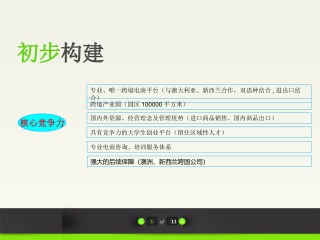
 2025-01-09 27
2025-01-09 27 -
跨境电商方案范文VIP免费
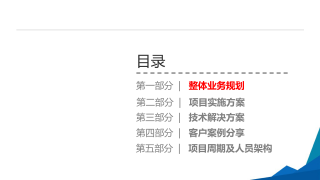
 2025-01-09 14
2025-01-09 14 -
创业计划书VIP免费
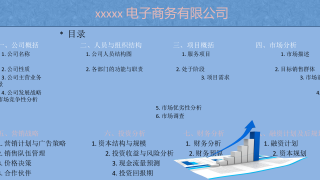
 2025-01-09 18
2025-01-09 18 -
xx生鲜APP计划书VIP免费

 2025-01-09 12
2025-01-09 12 -
跨境电商创业园商业计划书(盈利模式)VIP免费

 2025-01-09 8
2025-01-09 8 -
跨境电商计划书VIP免费
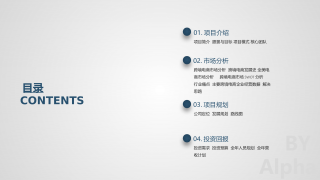
 2025-01-09 13
2025-01-09 13 -
绿色食品电商平台项目计划书VIP免费

 2025-01-09 22
2025-01-09 22 -
农产品电子商务商业计划书VIP免费
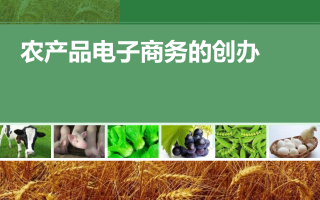
 2025-01-09 8
2025-01-09 8 -
农村电商平台商业计划书VIP免费
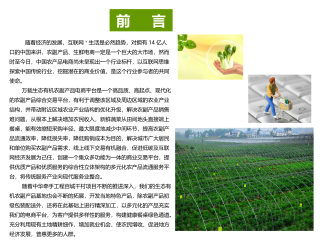
 2025-01-09 13
2025-01-09 13 -
生鲜商城平台商业计划书VIP免费
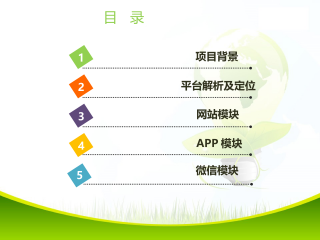
 2025-01-09 21
2025-01-09 21
作者:赵德峰
分类:高等教育资料
价格:15积分
属性:67 页
大小:713.69KB
格式:PDF
时间:2024-11-19






